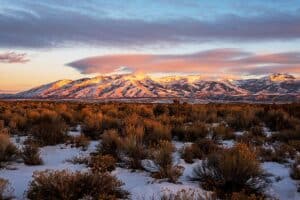A good deal is often defined as buying something for less than the seller’s asking price.
Sometimes that’s true. Sometimes, it isn’t.
If the seller’s something is not worth the discounted sales price, the buyer has bought a bad deal. This happens.
Knowing the difference between a good deal and a bow-wow depends on research and experience.
Land investors often find that their good deals are those where they’ve paid full price for undervalued properties, not where the seller reduces his asking price on an overvalued one. Such buyers know how to figure out when a property is under-priced, their sellers don’t.
Rural property has been appreciating more or less steadily for 20 years. But here are some recent examples of a bite looking for a buyer’s backside.
Corn land for $5,000 an acre. Let’s say you want to buy corn land because crop prices are projected to be strong as is demand for corn-based ethanol. Your choice might be: highly productive corn land (200 bushels per acre) priced at $5,000 per acre vs. so-so land (150 bushels per acre) priced at $2,500. Let’s assume that corn will fetch $3.40 per bushel into the foreseeable future and the farmer’s net will be $1.50.
Each highly productive acre nets $300 per year (200 bushels x $1.50), and each moderately productive acre nets $225. That’s a yearly net difference of $75.
Factoring out all interest payments, it would take 33 years to have the difference in net income from the highly productive acre pay for the difference in acquisition cost. If mortgage interest rears its ugly head, the pay-off time could easily double.
Corn is readily grown on marginal cropland, though it’s a little more costly. Still, my pencil suggests that the so-so land deserves a second look.
How much is deer meat worth? I’ve seen 200-acre hunting tracts — some woods, some open — priced in many places at $3,000 per acre and up…and up some more.
Assuming no immediate timber value on such tracts, does it make sense to spend at least $600,000 (not counting interest and taxes) for the chance to bring home $500 in venison every year?
Even if hunting is your way of life, this is probably not the best way to use your money. A sympathetic, blaze-orange accountant might suggest other options.
Hunting land can be leased, for $5 to $10 per acre. Renting 200 acres for $2,000 annually seems like a bargain.
Much public land is open to hunting for the price of a license.
Hunting preserves and guided hunts can be expensive, but are still more economical than buying an overpriced hunting tract.
Deer are everywhere these days, from the scungiest scrub in nowhere’s middle to my Aunt Lucy’s back yard in a Pittsburgh suburb.
If I absolutely had to own land for hunting, I’d look for something cheap, like fresh clearcuts and old strip mines, both of which provide good habitat.
$4,000/acre timberland. If you find wooded property that your consulting forester says will net $1,000 per acre, does it make sense to pay $3,000 per acre for what will be transformed into “cutover” land?
Maybe. It would have to be located close to a city, and the timbering would not significantly discount the land’s value for second homes. It also depends on the type and severity of timbering that must be done to get the $1,000. Clearcut land is discounted far more than land where trees smaller than 16 inches in diameter have been left.
If you’re looking for timberland to manage for timber production, you can’t buy it at the price pegged for second-home buyers.
Land with a conservation easement. Many good reasons exist for a landowner to restrict the use of his environmentally important land in return for local, state, federal and estate tax benefits.
If, however, this property is a landowner’s principal financial asset, a conservation easement can turn into the good deed that never goes unpunished. How so?
First, the easement will reduce the market value of the property when it’s put up for sale. One hundred acres with development rights might be worth $1 million; without, $200,000. That $800,000 can buy a lot of medical care, retirement and college education.
Second, the easement knocks out many buyers who would otherwise be interested. You have to find someone who likes the conservation restriction you’ve put on the property.
Third, it reduces the amount of money that can be passed to heirs.
I’ve observed that conservation easements work best with families who have significant other assets to spend and pass on.
I’ve seen many easement properties initially priced as if they did not bear a limitation or prohibition on improvements, timbering or division. They should.
Some buyers, of course, are encouraged to think that a conservation easement adds monetary value to the seller’s land. Not true. (It does, however, add value to the neighbors’ lands.) The seller has pocketed the easement’s value. It doesn’t convey to the new owner.
Ask an appraiser to estimate what a seller’s land is worth with its easement.
Severed minerals. If the seller is only able to convey surface rights, a buyer should proceed on tippy-toes, not ramming speed. The mineral rights — oil, gas, geothermal, coal, hard rock, clay — may be developed in such a way that the surface is devalued.
Buyers should pay less for surface-only land than for property that conveys with all rights intact.
Severed wind rights. Wind turbines are a sensible alternative to producing electricity from fossil fuels. Turbines, however, can discount the value of surface property, often by a lot.
Severed timber rights. Unless you are looking for cheap hunting land, don’t buy land whose timber rights have been sold.
Non-starter properties. I’ve looked into several dozen mineral properties over the years that were worthless, despite having large mineral deposits. Their problem was that their resources were poor quality, or they couldn’t be produced economically, or environmental factors prevented their development.
One seller had recently bought some 3,000 acres in Wyoming with a 100-foot-thick seam of coal for more than $30 million. He tried to flip it for $100 million until it became clear that the coal was so low in energy value that no customer would buy it. Maybe his acreage was really worth $3 million, soaking wet.
I had a seller tell me once that his property contained more than $100 million in timber, which maybe it did. But whatever the dollar figure, not a tree could be cut, because the state would not issue a timbering permit for this rare timber on this site. It pays a buyer to make some phone calls. The seller, I should add, had made the same call to the same state official that I did…before I did.
This content may not be used or reproduced in any manner whatsoever, in part or in whole, without written permission of LANDTHINK. Use of this content without permission is a violation of federal copyright law. The articles, posts, comments, opinions and information provided by LANDTHINK are for informational and research purposes only and DOES NOT substitute or coincide with the advice of an attorney, accountant, real estate broker or any other licensed real estate professional. LANDTHINK strongly advises visitors and readers to seek their own professional guidance and advice related to buying, investing in or selling real estate.









Good Day Curtis,
I live in Australia. I am looking to purchase a farm land in the USA. To grow crops and earn a living from farm income. I could spent just about a million$ for this. What would be a ideal size farm that would suit this purpose. Currently I am a dairy farmer and darying takes alot of time and i am getting older. I thought cropping would spare a bit of rest time, I think. Regards, Ben K C
Your per acre costs mentioned in the blog post just illustrate how very different the values are in land in this country. $1000 an acre for Maine prime farm ground while across the border in neighboring New Brunswick Canada, it is $4000 to $5000 for the same quality of dirt, acre. Mineral rights 99.999% included here. The .001% is the one elderly seller convinced there is oil, diamonds, gold, something very valuable under their quarter acre house lot’s backyard. Mental illness happens.
This is really solid advice and written EXTREMELY well. I think a lot of people need to know when to invest in what. Some people just see dollar signs and pounce no matter what. It’s also great to know when you should SELL off your rights, or if it’d be good to lease it.